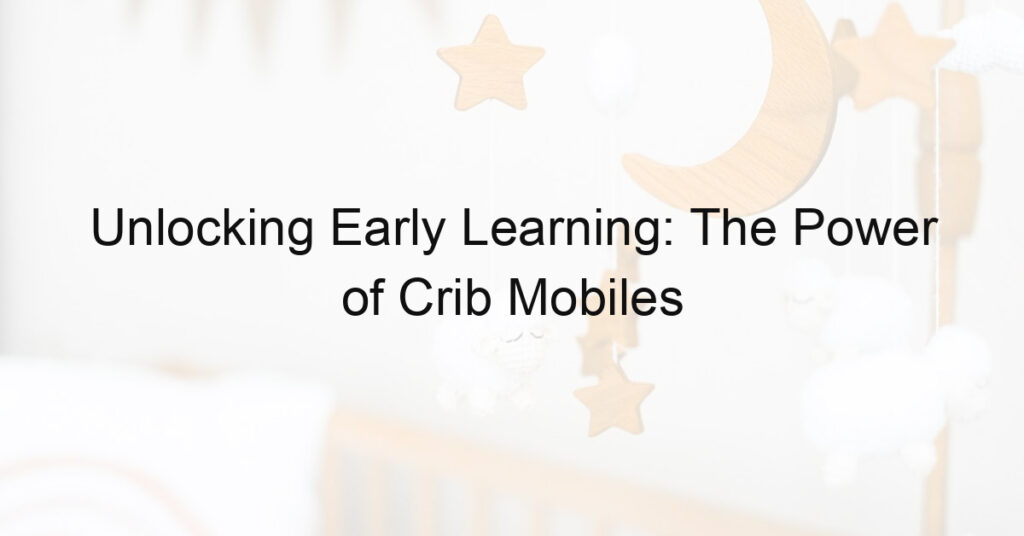
Introduction to Baby Sleep Training
As a new parent, you might be wondering about the best ways to help your baby sleep through the night. One of the methods that can be beneficial is baby sleep training. This introductory guide will help you understand the importance of baby sleep training and the benefits of independent sleep for infants.
- Understanding the importance of baby sleep training
- Benefits of independent sleep for infants
Baby sleep training is a process that encourages babies to fall asleep on their own. It’s a crucial step in their development. It not only ensures they get the rest they need but also helps them establish a healthy sleep routine. This routine can positively impact their mood, growth, and overall health.
Independent sleep is when a baby can fall asleep without the help of a parent or caregiver. This skill is essential for their development. It helps them learn self-soothing techniques, which can be beneficial in managing their emotions as they grow. Moreover, when babies learn to sleep independently, it can also lead to longer, more restful nights for the whole family.
In the following sections, we will delve deeper into the process of transitioning your baby to independent sleep, explore gentle methods for baby sleep training, and share some successful case studies. By the end of this guide, you will have a better understanding of how to master your baby’s independent sleep routine.
Transitioning Baby to Independent Sleep
One of the most significant milestones in your baby’s life is transitioning to independent sleep. This process is crucial for your baby’s development and your peace of mind. Let’s delve into understanding this transition process.
Understanding the Transition Process
Transitioning your baby to independent sleep is not an overnight process. It requires patience, consistency, and a clear understanding of the signs that your baby is ready for this change. Let’s explore these aspects in detail.
- Recognizing the signs that your baby is ready for independent sleep
Every baby is unique, and so are their sleep patterns. However, there are some common signs that indicate your baby might be ready for independent sleep. These include sleeping for longer stretches at night, showing signs of self-soothing, and being able to fall asleep without your immediate presence. If your baby is consistently waking up happy and well-rested, it might be a good time to start the transition.
- Creating a conducive environment for infant sleep transition
Creating a sleep-friendly environment is essential for a smooth transition. This includes a quiet, dark room with a comfortable temperature. A consistent bedtime routine can also help signal to your baby that it’s time to sleep. This routine could include a warm bath, a bedtime story, or a lullaby. Remember, the goal is to make your baby feel safe and comfortable enough to sleep independently.
Transitioning your baby to independent sleep is a journey, not a race. It’s important to be patient and consistent, and to celebrate small victories along the way. Remember, every baby is unique, and what works for one might not work for another. Stay flexible, and don’t hesitate to adjust your approach as needed.
Steps to Transitioning Your Baby
Transitioning your baby to independent sleep is a process that requires patience and consistency. Here are the two main steps to help you navigate this journey:
- Establishing a Consistent Baby Sleep Routine
- Gradually Reducing Parental Involvement in Baby’s Sleep Habits
Establishing a consistent sleep routine is the first step towards transitioning your baby to independent sleep. Babies thrive on routine, and a predictable sleep schedule can help them understand when it’s time to sleep.
Start by setting a specific bedtime and stick to it every day. Include calming activities like a warm bath, a bedtime story, or soft music to signal to your baby that it’s time to sleep. Over time, your baby will start associating these activities with sleep, making the transition smoother.
The second step is to gradually reduce your involvement in your baby’s sleep habits. This doesn’t mean leaving your baby to cry it out. Instead, it’s about teaching your baby to self-soothe and fall asleep independently.
Start by putting your baby down when they’re drowsy but still awake. Stay in the room until they fall asleep. Over time, try to leave the room before your baby falls asleep. This gradual process helps your baby learn to fall asleep without your presence, promoting independent sleep.
Remember, every baby is unique, and what works for one might not work for another. It’s essential to be patient and flexible during this transition process. With time and consistency, your baby will learn to sleep independently.
Gentle Methods for Baby Sleep Training
When it comes to training your baby to sleep independently, a gentle approach can be beneficial. This method is not only effective but also ensures that your baby’s emotional needs are met. Let’s explore some of these gentle sleep training techniques.
Overview of Gentle Sleep Training Techniques
There are several gentle sleep training techniques that you can use to help your baby transition to independent sleep. These methods focus on creating a comfortable and reassuring environment for your baby, which can help them feel secure and relaxed.
- Using Comforting Routines to Ease the Transition
- Teaching Baby to Self-Soothe
Establishing a comforting routine can help your baby understand that it’s time to sleep. This could include activities like reading a bedtime story, singing a lullaby, or giving a warm bath. These routines provide a signal to your baby that it’s time to wind down and prepare for sleep.
Teaching your baby to self-soothe is another effective gentle sleep training technique. This involves helping your baby learn to calm themselves when they wake up in the middle of the night. You can do this by giving them a comforting object like a soft toy or a blanket, or by gradually reducing the amount of time you spend comforting them when they wake up.
Remember, every baby is unique and what works for one might not work for another. It’s important to be patient and consistent, and to adjust your approach based on your baby’s needs and responses.
Implementing Gentle Sleep Training
When it comes to gentle sleep training, there are two key steps that parents need to follow. These steps are designed to ensure that your baby gradually adapts to the idea of sleeping independently, without causing undue stress or anxiety.
- Introducing the concept of sleeping alone to your baby
- Consistently following through with the sleep training process
The first step in gentle sleep training is introducing your baby to the concept of sleeping alone. This doesn’t mean leaving your baby alone to cry it out. Instead, it involves gradually increasing the amount of time your baby spends alone in their crib while they are still awake.
Start by placing your baby in their crib when they are drowsy but still awake, and stay with them until they fall asleep. Over time, you can gradually start leaving the room before your baby falls asleep. This helps your baby get used to the idea of falling asleep without your immediate presence.
The second step in gentle sleep training is consistency. Once you have introduced the concept of sleeping alone to your baby, it’s important to stick with it. This means maintaining a consistent bedtime routine, and responding in a consistent way when your baby wakes up during the night.
It’s also important to be patient. Sleep training is a process, and it can take time for your baby to adjust. Remember, the goal is to help your baby learn to fall asleep independently in a way that is gentle and respectful of their needs.
In conclusion, gentle sleep training is a process that involves introducing your baby to the concept of sleeping alone and consistently following through with the sleep training process. By taking a gentle and consistent approach, you can help your baby learn to fall asleep independently in a way that is comfortable and stress-free for both of you.
Case Studies: Successful Infant Sleep Transition
Let’s explore some real-life examples of successful infant sleep transitions. These case studies will provide practical insights and demonstrate how the right strategies can help your baby achieve independent sleep.
-
Case Study 1: Transitioning Twins to Independent Sleep
Meet the Johnson family, who had twin girls, Lily and Lola. The twins shared a room, and the parents were struggling to establish a sleep routine that would allow both girls to sleep independently.
The Johnsons started by setting a consistent bedtime and wake-up time. They also introduced a calming bedtime routine that included a bath, a story, and a lullaby. Over time, the twins began to associate these activities with sleep and would start to feel sleepy as the routine progressed.
Next, the parents began to put the twins in their cribs when they were drowsy but still awake. This helped the girls learn to fall asleep on their own. It took a few weeks, but eventually, Lily and Lola were able to sleep independently, waking up less frequently during the night.
This case study shows that consistency, patience, and a soothing bedtime routine can be key factors in helping twins transition to independent sleep.
-
Case Study 2: Overcoming Sleep Regression with Gentle Sleep Training Techniques
The second case study involves the Smith family and their son, Max. Max was a good sleeper until he hit a sleep regression at around six months old. Suddenly, he was waking up several times a night and having difficulty falling back asleep.
The Smiths decided to try gentle sleep training techniques. They began by implementing a consistent sleep schedule and a calming bedtime routine, similar to the Johnson family. They also used a technique called ‘gradual withdrawal’, where they slowly reduced their presence in Max’s room as he fell asleep.
At first, they would sit next to Max’s crib until he fell asleep. Then, they moved a little further away each night, until they were eventually able to leave the room before Max was fully asleep. This process took a few weeks, but it helped Max learn to fall asleep on his own again.
This case study demonstrates that gentle sleep training techniques can be effective in overcoming sleep regression and promoting independent sleep.
These case studies highlight the importance of consistency, a calming bedtime routine, and patience in helping infants transition to independent sleep. Every child is different, so it may take some trial and error to find the approach that works best for your family. Remember, the goal is to help your child develop healthy sleep habits that will last a lifetime.
Key Takeaways: Mastering Your Baby’s Independent Sleep Guide
As we conclude this comprehensive guide on helping your baby sleep independently, let’s summarize the key points. These takeaways will serve as your roadmap in this journey.
- Understanding your baby’s unique sleep needs
- Patience and consistency in implementing sleep training methods
- Recognizing and celebrating progress in baby’s independent sleep
Every baby is unique and so are their sleep needs. Some babies may need more sleep than others, while some may have specific comfort needs. It’s crucial to observe and understand your baby’s sleep patterns and needs. This understanding forms the foundation of successful sleep training.
Patience is key when it comes to sleep training. It’s a gradual process and results may not be immediate. Consistency in implementing the sleep training methods is equally important. Stick to the sleep schedule and routines you’ve set, even if it seems challenging at times. Remember, consistency is what will ultimately help your baby adjust to independent sleep.
Every small step towards independent sleep is a victory and should be celebrated. It could be your baby sleeping for a longer stretch at night or falling asleep without needing to be rocked. Recognizing and celebrating these milestones will keep you motivated and make the journey enjoyable.
In conclusion, mastering your baby’s independent sleep is a journey that requires understanding, patience, and consistency. It’s a journey filled with small victories that should be celebrated. Remember, every baby is unique and what works for one may not work for another. So, be patient, stay consistent, and most importantly, enjoy this beautiful journey with your little one.
Conclusion: The Journey to Independent Sleep for Infants
As we wrap up our discussion on baby sleep training, it’s important to reflect on the journey we’ve taken. We’ve explored the benefits of sleep training, the gentle methods that can be used, and the success stories of parents who have successfully transitioned their infants to independent sleep. Now, let’s take a moment to reflect on the benefits of baby sleep training and how we can continue to support our baby’s sleep habits as they grow.
- Reflecting on the benefits of baby sleep training
Throughout this guide, we’ve highlighted the numerous benefits of baby sleep training. Not only does it help your baby develop a healthy sleep pattern, but it also contributes to their overall well-being. A well-rested baby is a happy baby, and a happy baby makes for a happy home. The benefits of sleep training extend beyond the infant years, setting the foundation for good sleep habits that can last a lifetime.
- Continuing to support your baby’s sleep habits as they grow
As your baby grows and develops, their sleep needs will change. It’s important to continue to support their sleep habits during these changes. This may mean adjusting bedtimes, nap times, or even the sleep training methods you use. Remember, consistency is key. By maintaining a consistent sleep schedule and routine, you’re helping your child understand and anticipate sleep, which can make bedtime a much smoother process.
In conclusion, the journey to independent sleep for infants may not always be an easy one, but it’s certainly a rewarding one. By understanding the importance of sleep, utilizing gentle sleep training methods, and being consistent, you can help your baby develop healthy sleep habits that will benefit them for years to come.














